
第三单元第四部分 Unit3 Section4 工业废水与生活污水的处理 Industrial wastewater and domestic sewage treatment
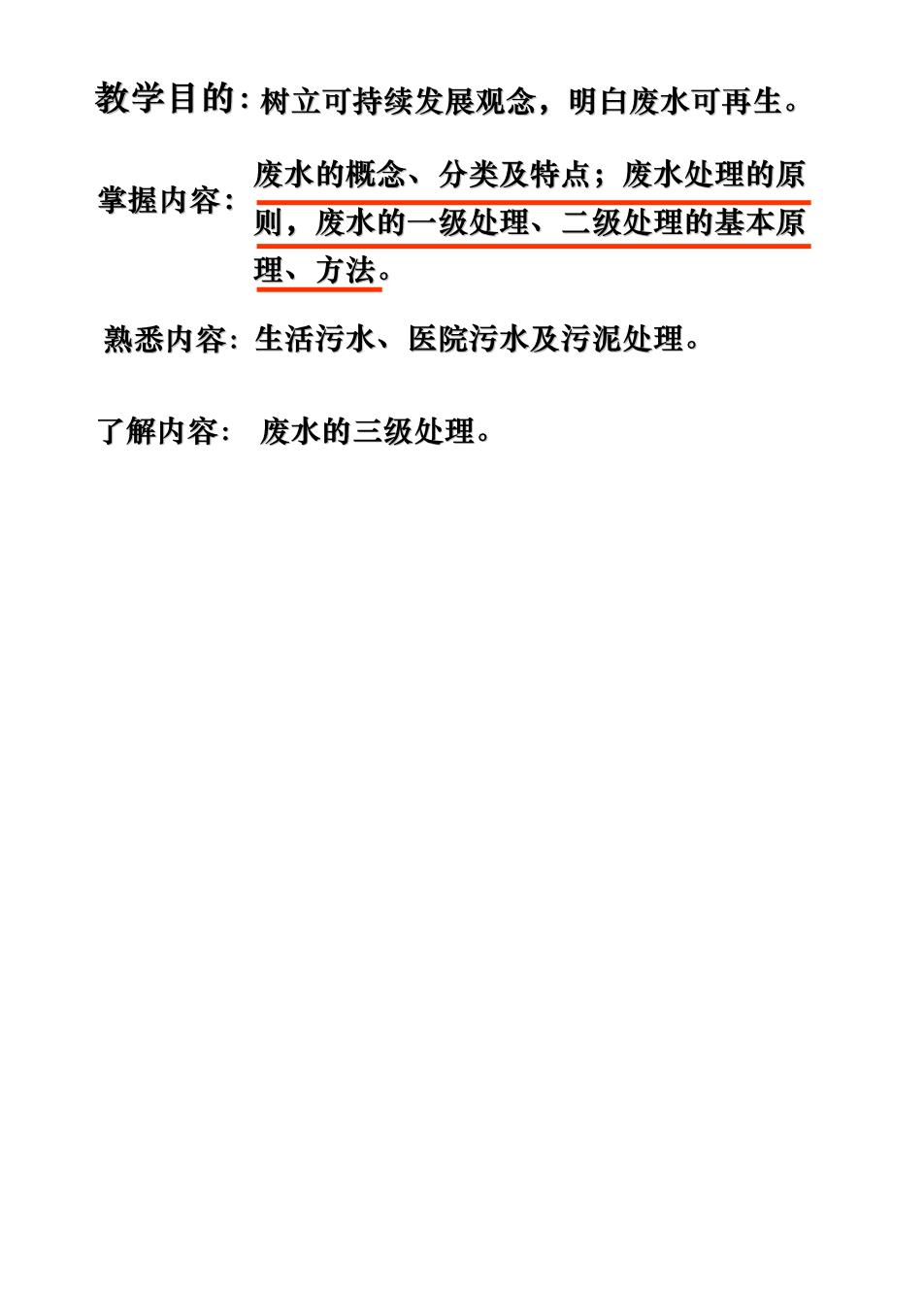
教学目的:树立可持续发展观念,明白废水可再生。 废水的概念、分类及特点;废水处理的原 掌握内容: 则,废水的一级处理、二级处理的基本原 理、方法。 熟悉内容:生活污水、医院污水及污泥处理。 了解内容:废水的三级处理
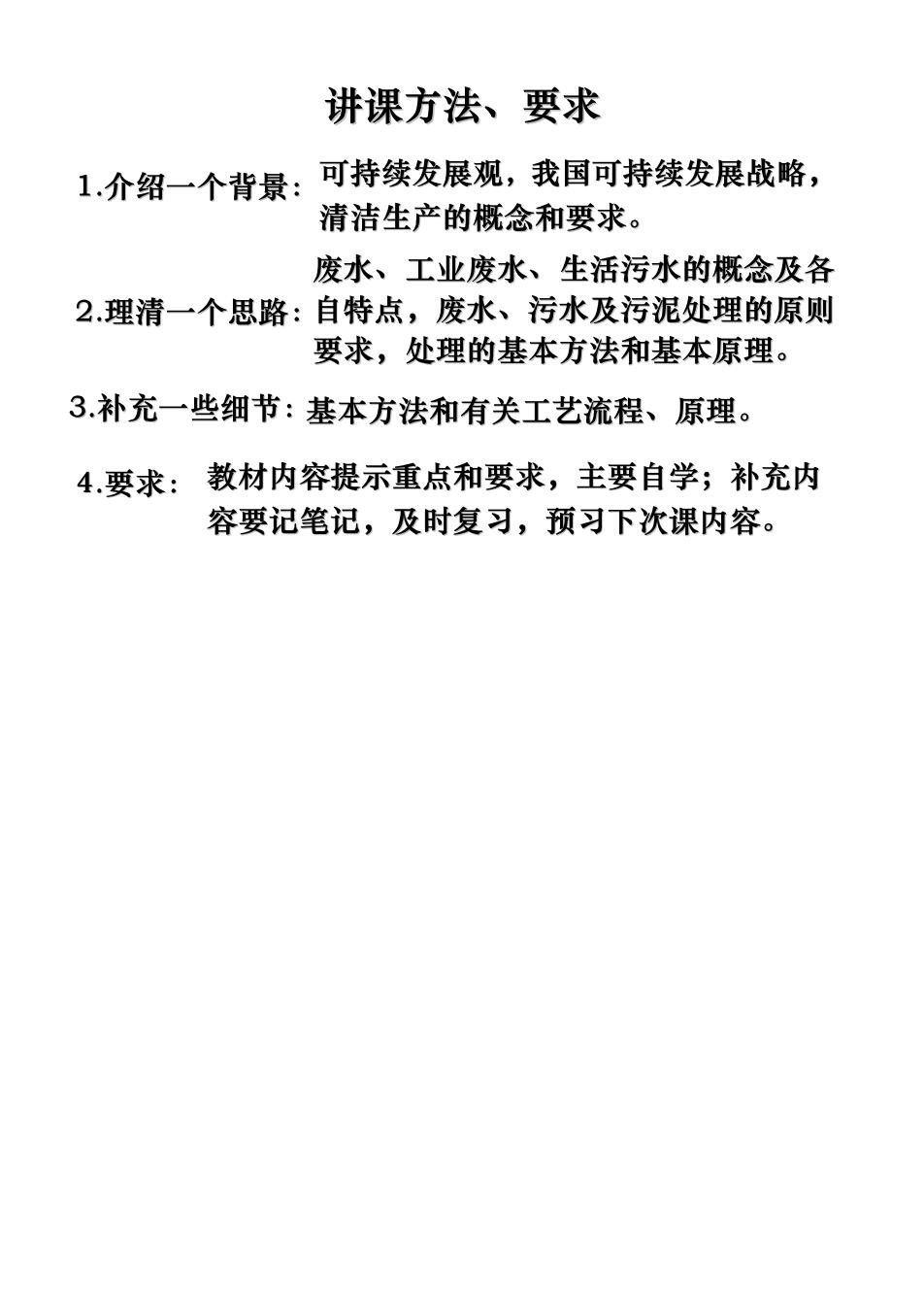
讲课方法、要求 1.介绍一个背景: 可持续发展观,我国可持续发展战略, 清洁生产的概念和要求。 废水、工业废水、生活污水的概念及各 2理清一个思路:自特点,废水、污水及污泥处理的原则 要求,处理的基本方法和基本原理。 3补充一些细节:基本方法和有关工艺流程、原理。 4要求:教材内容提示重点和要求,主要自学;补充内 容要记笔记,及时复习,预习下次课内容
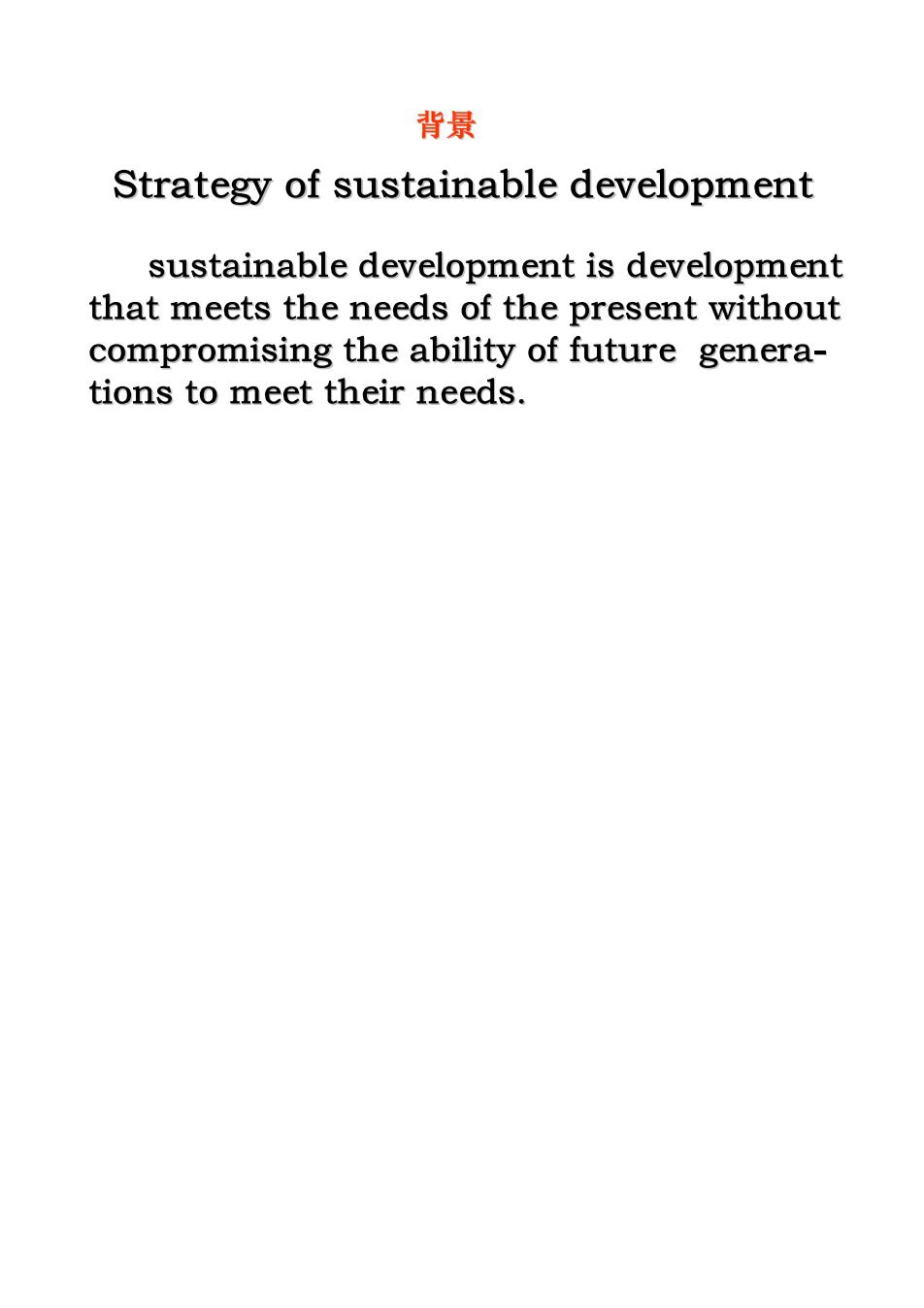
背景 Strategy of sustainable development sustainable development is development that meets the needs of the present without compromising the ability of future genera- tions to meet their needs
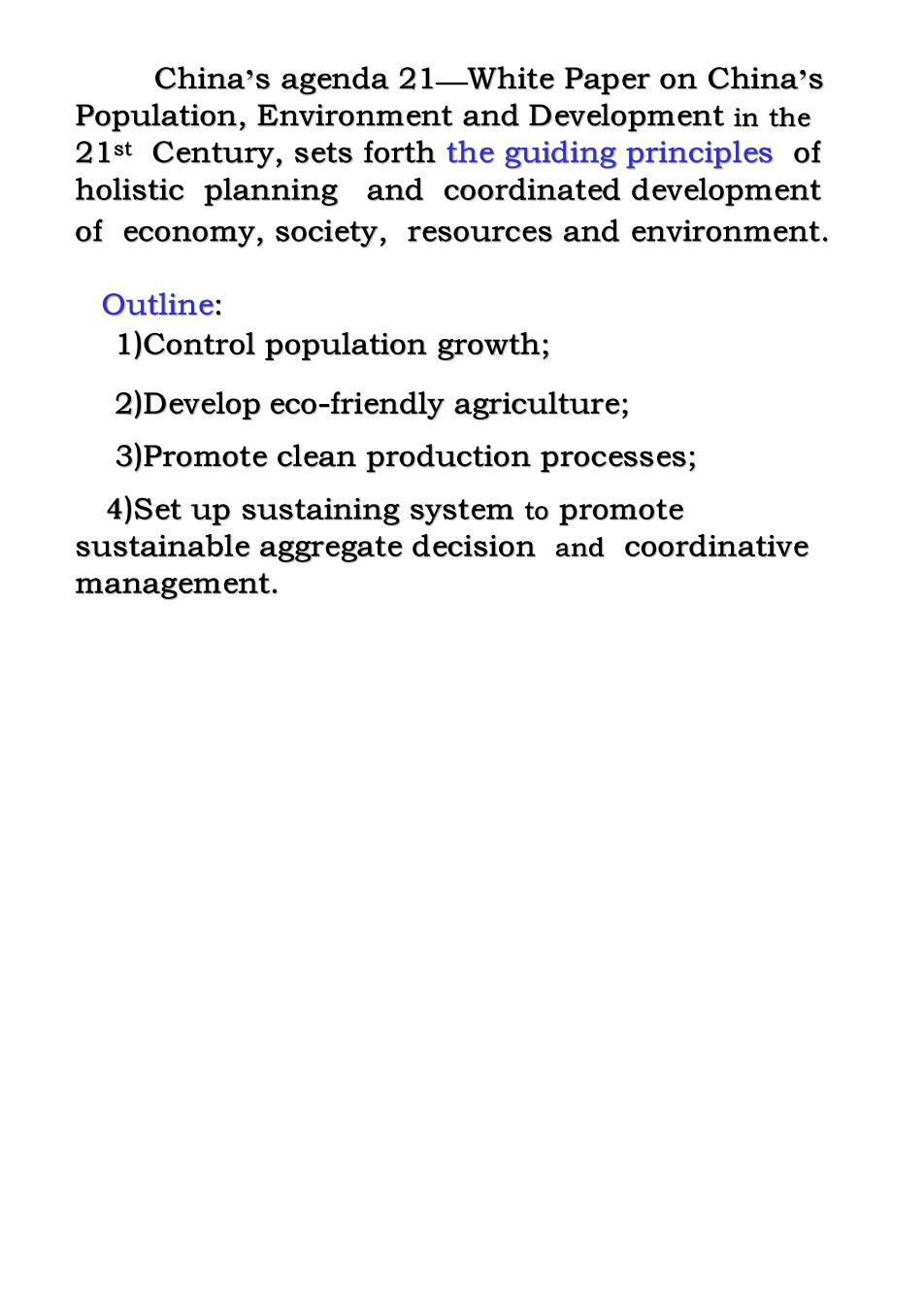
China's agenda 21-White Paper on China's Population,Environment and Development in the 21st Century,sets forth the guiding principles of holistic planning and coordinated development of economy,society,resources and environment. Outline: 1)Control population growth; 2)Develop eco-friendly agriculture; 3)Promote clean production processes; 4)Set up sustaining system to promote sustainable aggregate decision and coordinative management
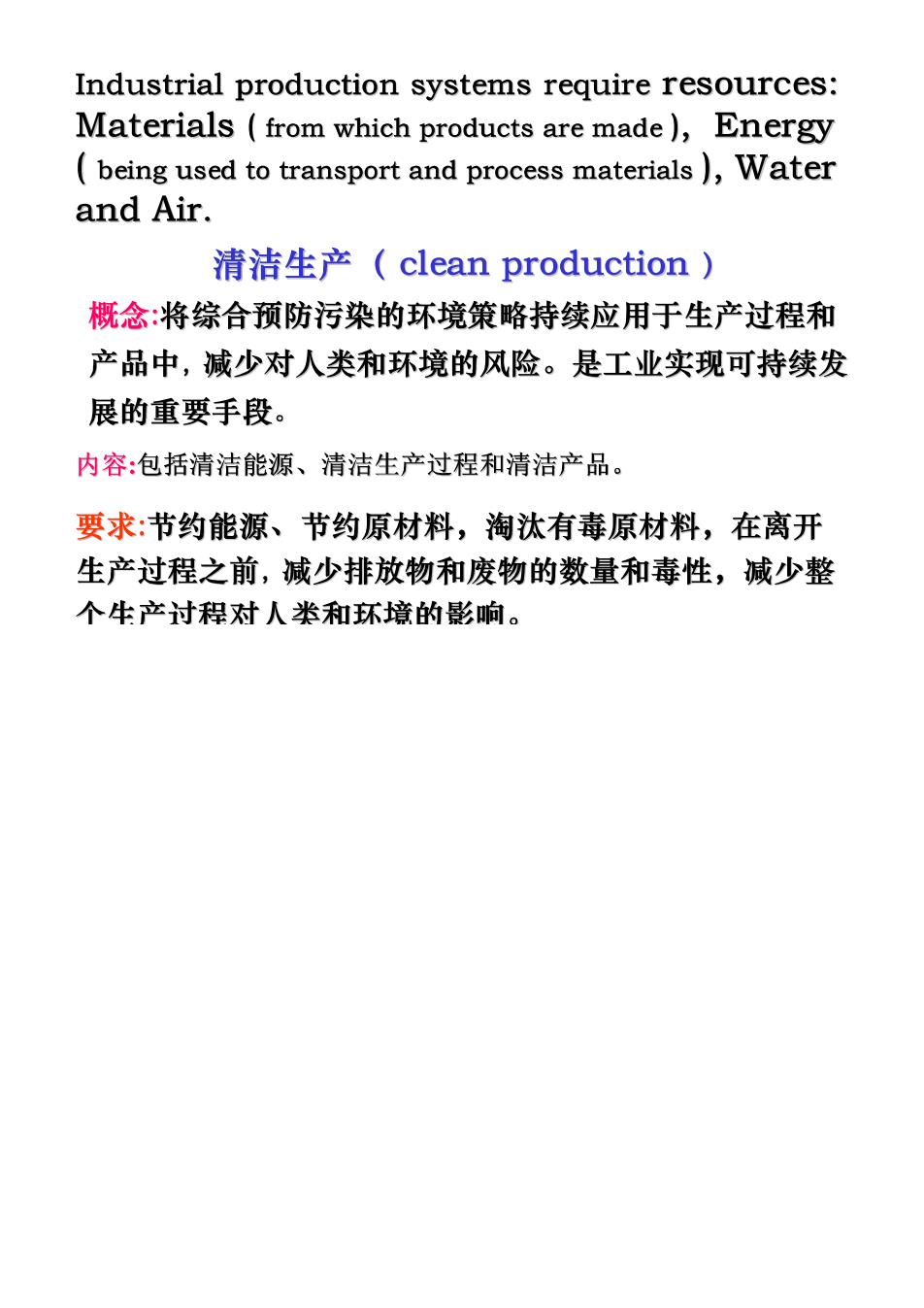
Industrial production systems require resources: Materials from which products are made),Energy being used to transport and process materials),Water and Air. 清洁生产(clean production) 概念:将综合预防污染的环境策略持续应用于生产过程和 产品中,减少对人类和环境的风险。是工业实现可持续发 展的重要手段。 内容:包括清洁能源、清洁生产过程和清洁产品。 要求:节约能源、节约原材料,淘汰有毒原材料,在离开 生产过程之前,减少排放物和废物的数量和毒性,减少整 个生产过程对人类和环境的影响

主要手段:是绿色设计、生态工艺。设计时考虑产品 的性能、质量、成本和对废旧产品的回收处理;生产时考 虑节约能源、用水、原料或使用替代品,中间废弃物能回 收利用,终末废弃物对自然界无害或容易分解,对生产 者、使用者无害等。 实行清洁生产就是实行污染源头预防,而不是在污染 发生之后进行治理(末端处理)
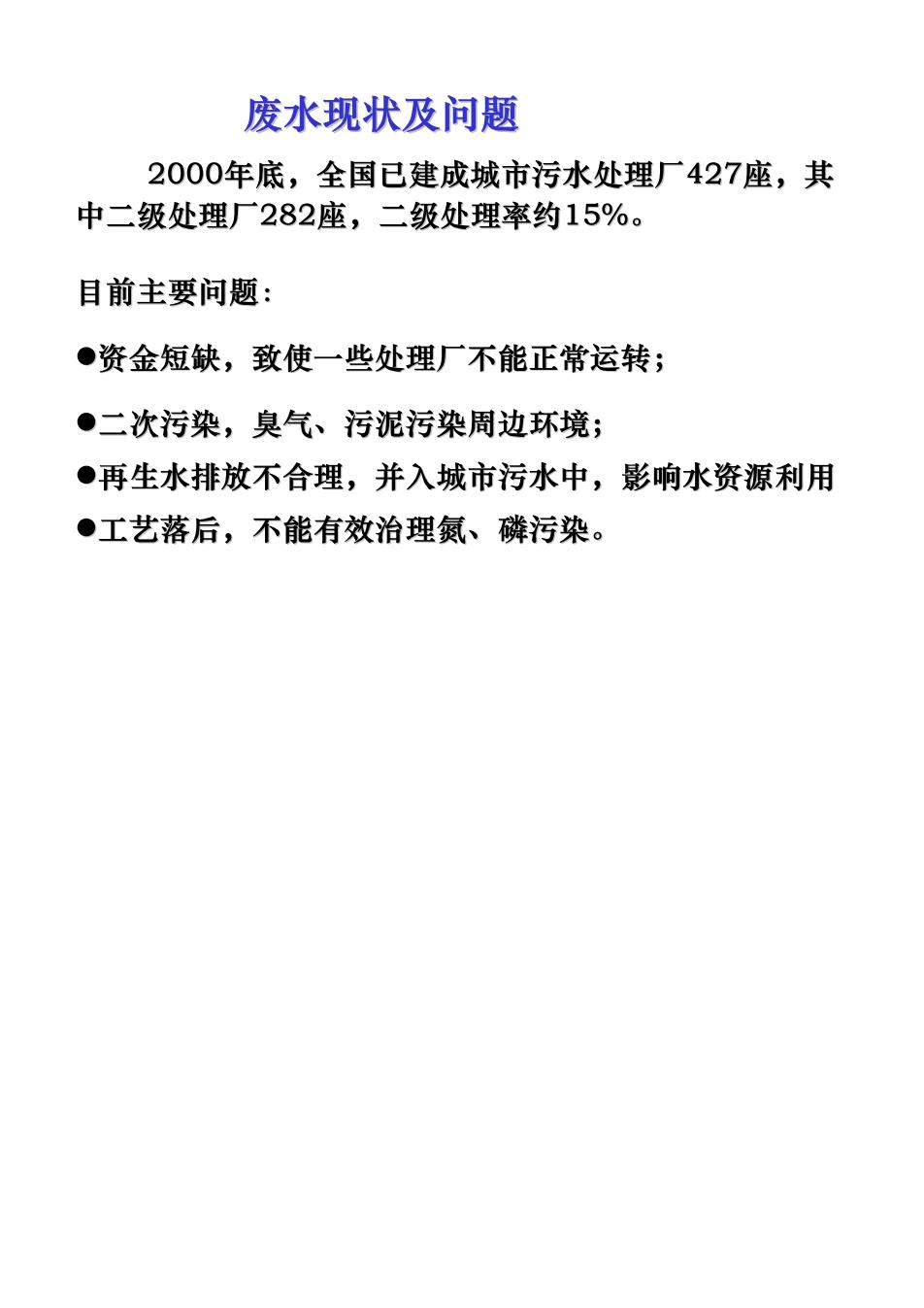
废水现状及问题 2000年底,全国已建成城市污水处理厂427座,其 中二级处理厂282座,二级处理率约15%。 目前主要问题: ●资金短缺,致使一些处理厂不能正常运转; ●二次污染,臭气、污泥污染周边环境; ●再生水排放不合理,并入城市污水中,影响水资源利用 ●工艺落后,不能有效治理氮、磷污染

一、废水的概念及分类、特点 废水:净水被使用后,理化性质发生改变, 水质受到不同程度污染,称为废水(waste water),也称为污水(sewage)。 分为生活污水(domestic sewage,sanitary sewage) 工业废水(industrial waste water)

1.生活污水 来源广,水质相似;杂质多,占总量的0.1%-1%,其 余99%以上是水。 女含大量有机物,占悬浮物(suspended solid,SS) 的3/4以上,B0D300-500mg/L,主要包括纤维素、油 脂、肥皂、蛋白质及其分解产物。一般不含毒物。 ★无机杂质以泥沙、矿物废料及溶解盐类居多。 ★适于微生物繁殖,含大量细菌和病原体。 ★肥效较高。 ★水量水质与季节、居民生活状况、生活习惯(用水 量)有关。年排放量约100亿吨,处理率约9%